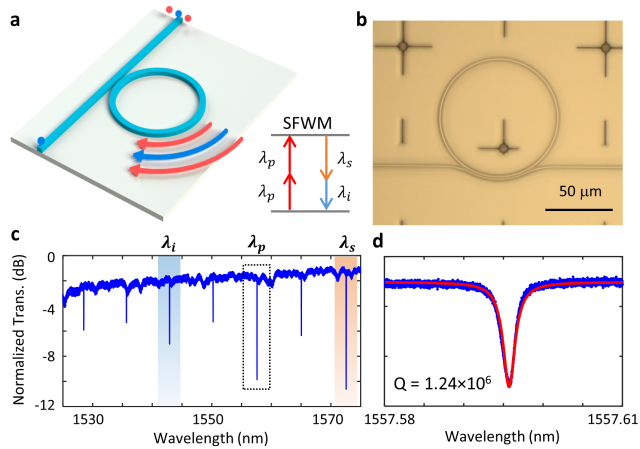Congrats to Trevor for Successfully Defending His Thesis!
Wonderful work on "Integrated Quantum Photonics with III-V Semiconductors". Congrats Trevor!

The exploration of quantum technologies presents a promising avenue to achieve new functionalities not possible with classical systems, which could revolutionize computing, information transfer, encryption, and sensing. Among quantum platforms, quantum photonics offers advantages due to the ability to maintain robust quantum coherence at room temperature, achieve scalability through semiconductor processing, minimize undesirable environmental interactions, and encode quantum states in many different degrees of freedom of a photon.
We explore integrated quantum photonics with nonlinear III-V semiconductors, namely InGaP and AlGaAs, to demonstrate ultrabright sources of quantum light, efficient entanglement distribution, and two-photon interference from nominally indistinguishable photon-pair sources. We demonstrate a novel, ultra-low-loss AlGaAs-on-insulator platform capable of generating time-energy entangled photons through spontaneous four wave mixing in a high quality factor (Q>1 million) microring resonator with nearly 1,000-fold improvement in brightness compared to existing sources. After developing an efficient source of quantum light, we demonstrate the fundamental building blocks required for chip-scale quantum photonic circuitry including chip-to-fiber couplers, waveguide crossers, optical filters, interferometers, and spectral pulse shapers all with comparable performance to the silicon and silicon nitride quantum photonic platforms.
Using the bright source of quantum light, we demonstrate the most efficient chip-scale time-bin quantum key distribution protocol to date with 8 kbps sifted key rates using less than 110 uW of input power while maintaining error rates below 10% and sufficient two-photon visibility to ensure security of the channel. As a proof of principle, a quantum key is distributed across 12 km of deployed fiber on the UCSB campus and used to encrypt a 21 kB image with <9% error. Finally, preliminary chip-scale quantum photonic circuits are developed to demultiplex qubits and perform the Hong-Ou-Mandel two-photon interference experiment on an integrated photonic chip. This circuit utilizes beamsplitters, optical filters, interferometers, and efficient ring-based quantum light sources as a foundation for larger circuits and experiments in the near future. This work demonstrates the benefits of III-V semiconductor materials for nonlinear quantum photonic circuits that can surpass the capabilities possible with state-of-the-art silicon photonics.
Committee Chairs: John Bowers and Galan Moody